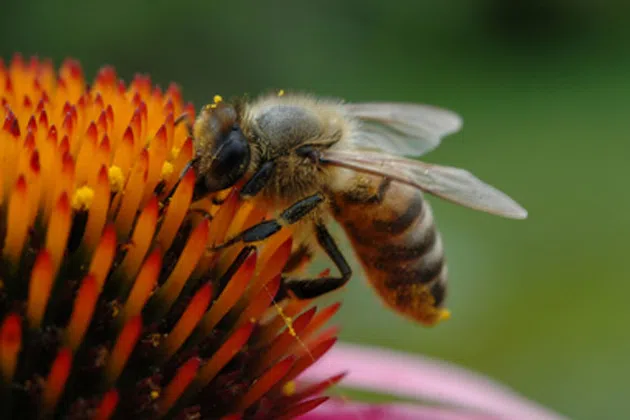
By Illinois Radio Network
URBANA – Honeybee populations are on the decline across the country and in the state of Illinois. The ag industry, Illinois beekeepers and communities across the state have come up with solutions to help honeybee populations rebound.
Diseases, weather and mites are some of the major factors affecting honeybees, according to the Illinois Department of Agriculture (IDOA).
Gene Robinson, director of the University of Illinois Bee Research Facility, said honeybee populations have been dropping for years.
“Populations have declined over the past 10 years by about 30 percent annually throughout the U.S.,” Robinson said.
Between July 2015 and June 2016, many beekeepers lost most or all of their colonies due to a frigid winter, according to the IDOA.
American foulbrood disease, European foulbrood and chalkbrood were detected in some Illinois colonies that were destroyed.
The department also said that Varroa mites and small hive beetles continue to plague honeybee colonies. The small hive beetle population spread to 64 counties last year.
A decrease in honeybees impacts farmers and wildlife in the state, according to Robinson.
“A decline would mean fewer bees available for pollination, which would lower yields of important crops and food plants for wildlife,” Robinson said.
Robinson said the university is taking steps to protect honeybees.
“In terms of research, laboratories at the University of Illinois are conducting research on bee nutrition, habitat improvement and bee health to address the bee crisis,” Robinson said.
The IDOA helps monitor the health of honeybees and suggests treatment, while local governments have adopted ordinances to allow beekeepers in their jurisdictions to increase honeybee populations, according to Steve Chard, supervisor at the Illinois Department of Agriculture’s Division of Natural Resources.
Monsanto is also working on a solution to help stop Varroa mites from destroying colonies, including technology that will stop the mite population from growing within a colony, without the use of pesticides.
Communities can also take part in protecting honeybees.
“Grow bee-friendly flowers and plants in gardens and consider entering the beekeeping craft,” Chard said. “Loss of habitat has been identified as a contributor to honeybee losses.”
If a honeybee swarm appears on property, residents are urged to contact the agriculture department or a local beekeeper to collect the bees instead of having them exterminated.
“Swarms can be relocated to existing apiaries and continue to contribute to the health and welfare of humankind,” Chard said.




